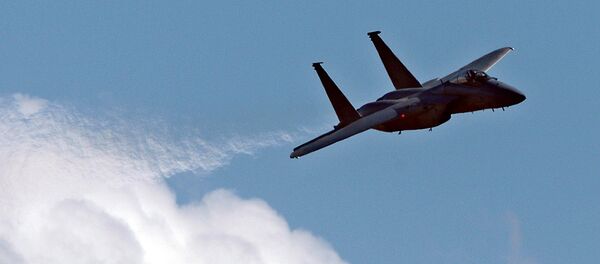"Its [F-15 deployment] value is more for interoperability and for forward presence, adding an aerial tripwire of sorts to the ground tripwire we are starting to establish in eastern NATO member states," Brookings Institution Foreign Policy Program Research Director Michael O'Hanlon told Sputnik on Friday.
The "tripwire" deterrence strategy consists of pre-positioning NATO forces in countries neighboring Russia that would act as a trigger for a larger deployment should Russia ever launch a cross-border invasion, former US National Security Advisor Zbigniew Brzezinski explained to Congress last January.
O’Hanlon noted that the dozen F-15 fighter jets sent to Europe represents the smallest imaginable deployment of tactical airpower, a minimal military response appropriate to current circumstances.
"In fact, if one postulates a shooting war, it doesn’t even quite reach that threshold," O’Hanlon suggested. "I support it, appreciating its blend of resoluteness with restraint."
Woodrow Wilson Center scholar Michael Kofman told Sputnik that the deployment of fighter jets will enhance NATO’s presence as part of Washington’s reassurance initiative in Europe.
"It doesn't affect the balance [of forces], [it’s] just about having more presence and helping with airspace coverage," Kofman noted.
Sending the F-15 jets is part of Operation Atlantic Resolve, and will support the NATO air surveillance mission in Iceland and conduct training with Bulgaria, Estonia and Romania through September, the US Air Force said in a press release.
Under the US European Reassurance Initiative (ERI), the United States will deploy an armored brigade to NATO’s eastern front on a rotational basis. By 2017, the United States will have a full divisional set of equipment prepositioned in Germany, Belgium and the Netherlands.
Russia has repeatedly warned the United States and NATO against building up military forces at its borders, stating it is provocative as well as harmful to regional and global stability.



